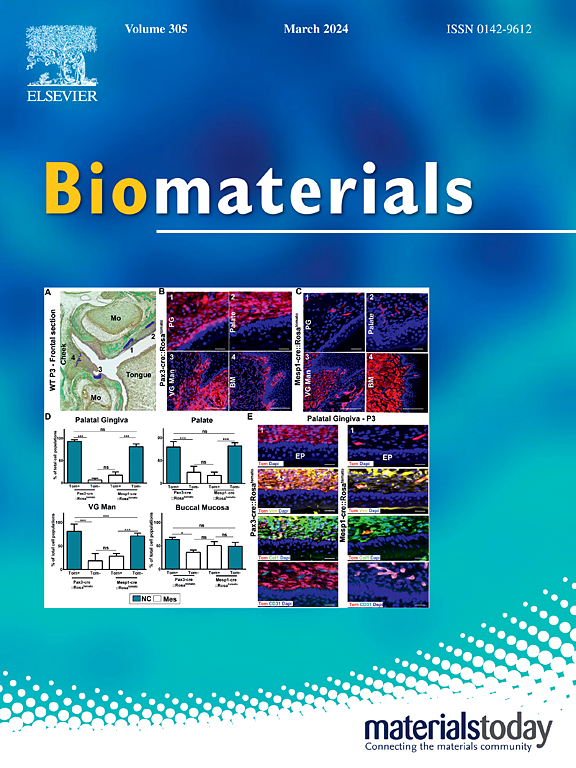Zn2+-driven metformin conjugated with siRNA attenuates osteoarthritis progression by inhibiting NF-κB signaling and activating autophagy
IF 12.8
1区 医学
Q1 ENGINEERING, BIOMEDICAL
引用次数: 0
Abstract
Osteoarthritis (OA) is a type of joint disease that influences millions of individuals. Regrettably, effective treatment for OA is currently unavailable. The challenge lies in the deep location of chondrocytes within the dense cartilage matrix that hinders the delivery and efficiency of clinical OA drugs. To overcome this obstacle, the present study proposed a hybrid nanodrug by Zinc(II) metal-drug coordination-driven self-assembly as highly efficient delivery system. This nano-assembly formulations possessed the ability to deliver two types of drugs, namely metformin (Met) and therapeutic genes (p65 siRNA). Results showed that this nano-assembly not only exhibited positive charge-driven anchoring to the cartilage matrix and effective drug delivery capacity, but also synergistically inhibited NF-κB activity and activates autophagy of OA chondrocytes, thus safeguarding the cartilage. The successful achievement of this project not only contribute to the advancement of research on bio-nanomaterials for treating OA, but also establish a robust theoretical foundation for realizing promising and functional integration of nanomedicine targeting OA.
求助全文
约1分钟内获得全文
求助全文
来源期刊

Biomaterials
工程技术-材料科学:生物材料
CiteScore
26.00
自引率
2.90%
发文量
565
审稿时长
46 days
期刊介绍:
Biomaterials is an international journal covering the science and clinical application of biomaterials. A biomaterial is now defined as a substance that has been engineered to take a form which, alone or as part of a complex system, is used to direct, by control of interactions with components of living systems, the course of any therapeutic or diagnostic procedure. It is the aim of the journal to provide a peer-reviewed forum for the publication of original papers and authoritative review and opinion papers dealing with the most important issues facing the use of biomaterials in clinical practice. The scope of the journal covers the wide range of physical, biological and chemical sciences that underpin the design of biomaterials and the clinical disciplines in which they are used. These sciences include polymer synthesis and characterization, drug and gene vector design, the biology of the host response, immunology and toxicology and self assembly at the nanoscale. Clinical applications include the therapies of medical technology and regenerative medicine in all clinical disciplines, and diagnostic systems that reply on innovative contrast and sensing agents. The journal is relevant to areas such as cancer diagnosis and therapy, implantable devices, drug delivery systems, gene vectors, bionanotechnology and tissue engineering.
 求助内容:
求助内容: 应助结果提醒方式:
应助结果提醒方式:


